

Cooling the tube – Engineering heat out of the Underground (2017)
source link: https://www.ianvisits.co.uk/articles/cooling-the-tube-engineering-heat-out-of-the-underground-20873/
Go to the source link to view the article. You can view the picture content, updated content and better typesetting reading experience. If the link is broken, please click the button below to view the snapshot at that time.
Cooling the tube – Engineering heat out of the Underground
On a hot summers day, a trip on the tube to get home can be a dreaded experience, with already hot trains overflowing with sweaty people. But how did we get to a situation where tube trains are stiflingly hot, and what’s being done about it?
A talk given by London Underground’s Head of Station Systems Engineering, Sharon Duffy, looked into the challenges the tube faces in keeping cool during the summer.
The “tube” can be split into two types of service — the tube proper which runs through tube tunnels, and the older sub-surface lines which are just below street level (pedants get very upset when sub-surface lines are called tube trains).
The older sub-surface tunnels were built for steam trains, so had loads of big holes in the ground included in the design to deal with removing smoke, and they are also much larger than tube tunnels. This has allowed the London Underground to fit air-conditioning units to its new fleet of sub-surface trains (S Stock), and as anyone who uses them appreciates, it’s a boon on hot days to get onto a cool train.
The heat from the air conditioning units is easily vented away when the trains are underground thanks to the pre-existing steam train ventilation.
The deep tube tunnels
However, it’s the deep level tube tunnels that cause the biggest problems for both passengers suffering the heat, and the London Underground in getting rid of it.
The deep level tunnels suffer a number of problems that are individually a nuisance, but collectively add up to show why there is such a huge problem cooling the Underground.
One of the biggest problems is a side-effect of what made it possible to dig the deep level tunnels in the first place — namely the very solid and nice to tunnel through London Clay which sits under the city.
In fact, when the early tube tunnels were dug, they were so cool down there that the cool tube was seen as a respite from the summer heat on the surface. Why suffer on a bus in the heat when there’s a cool tube to take instead, said the marketing men.
So why is the Bakerloo line, once the coolest place to be, now a mobile sauna?
While that heavy thick clay is lovely to tunnel through, it is also a heat insulator.
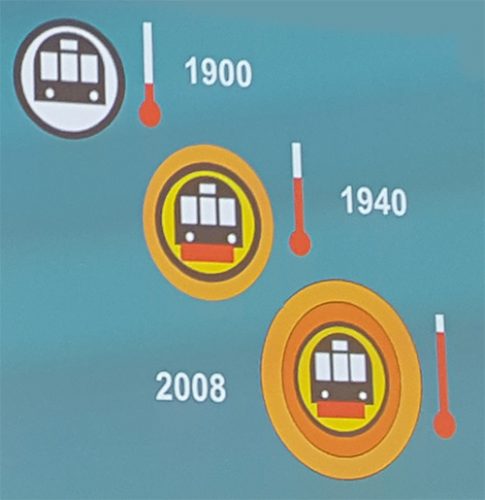 Over the years, the heat from the trains soaked into the clay to the point where it can no longer absorb any more heat. Tunnels that were a mere 14 degrees Celsius in the 1900s can now have air temperatures as high as 30 degrees Celsius on parts of the tube network.
Over the years, the heat from the trains soaked into the clay to the point where it can no longer absorb any more heat. Tunnels that were a mere 14 degrees Celsius in the 1900s can now have air temperatures as high as 30 degrees Celsius on parts of the tube network.
Where does the heat come from?
Well, the passengers aren’t the problem. All those hot sweaty bodies represent roughly 2 percent of the heat in the tunnels.
Climate change is also not much of a problem. It’s an impact, but the tunnel temperatures are not much affected by what’s happening up on the surface. During a heatwave in 2006, as the surface temperatures jumped around, the tunnels were pretty much constant.
About 21% of the heat in the tunnels comes from the movement of the trains themselves, from aerodynamic drag and other frictional losses. The motor engines account for 15%, the electrical and auxiliary systems are the remaining 12%.
About half the heat in the tunnels though comes from just one source –from the trains slowing down — the conversion of movement into heat by applying the brakes.
So it can be seen that cutting the heat from applying the brakes is where the biggest win would be, and indeed, the use of regenerative braking now converts about half the heat loss back into electricity. However, that can only work where trains are accelerating and braking at the same time, on the same electricity sub-station loop.
Experiments have been underway to improve that by use of an inverting substation, supplied by Alstom, which can send unused power from braking trains back into the national grid.
Removing the heat
Anyone who has stood on the platforms will know that as the trains approach, there’s a blast of wind. This is intentional, as the trains act as air pistons in the small tunnels, and the effect of pushing air ahead and sucking air from behind soaks away about 11 per cent of the heat in the tunnels.
So when you curse as your paper flaps in the wind, think about the cooling benefits as well.
Mechanical ventilation removes about 10 per cent of the heat — that’s the big ventilation shafts that line the tunnels.
The older tunnels weren’t built with a lot of ventilation, as it wasn’t thought to be necessary — after all it’s difficult to argue that tunnels will get hot when standing in a tunnel that’s cool enough that you need to wear a jumper.
By the time the Victoria line came along, the engineers were very well aware of the problem and it was built with considerably more ventilation shafts than older tunnels would have been supplied with.
Although it varies depending on location, in general, cooler air is sucked down through the stations, and then ventilation shafts in the tube tunnels sucks out the hot air.
In two locations, they’ve added water chillers to the intake to further cool the air down. Some of you might have noticed the shockingly cold airflow on the eastbound platform at St Paul’s tube station.
Air is taken in through an old lift shaft, cooled down, then pumped down to the platforms. A similar design was recently installed between Blackhorse Road and Walthamstow Central on the Victoria line.
Ventilation isn’t just about cooling though. On newer networks, such as Crossrail, they also act as smoke control systems should the worst happen in a tunnel. During a fire, the shafts can in places reverse flow, to blow smoke in a preferred direction. The aim being that people walking down a tunnel walk towards a fan blowing fresh air down the tunnel, while the smoke is sucked away behind them.
Over the past few years, 14 of the Victoria line shafts have been upgraded, and 50 fans across the network have had their airflow doubled, with 10 out-of-action fans brought back into use.
Despite that, fully 79 per cent of the heat in the tunnels is left to soak into the surrounding clay, which is already at or near its limit thanks to decades of absorbing heat.
The difficulty of adding more ventilation is the lack of space above ground to put new ventilation shafts. This is always going to be a problem for the older tube tunnels except on rare occasions when a surface development takes place at just the right location and agreements can be made to include a shaft down to the Underground.
It’s not just the cost of adding the new shafts and the running costs of all the electricity, but ventilation shafts also need sound attenuators to reduce the noise levels, both at the surface, but also in the tunnels so that people aren’t deafened by the noise.
People tend to be wary of having a new ventilation shaft in their neighbourhood, even though the aim is to keep the volume level to that equivalent to background city noise.
Even if new shafts are installed, at the moment they represent just 10% of the heat removed from the tunnels, so you can imagine how many extra shafts would be needed to remove a meaningful amount. So much land above the tunnels would be needed that you might as well just have a surface railway.
Other ideas
There are other ideas. You’ve probably seen the blue fans in some stations, and while technically they don’t do anything to remove heat (in fact, at an imperceptible level, they raise it), the airflow movement over human bodies helps evaporate sweat and that cools our own bodies.
Cooling the tube is as much about comfort as it is about actual lowering of temperature, so the evaporative effect caused by the fans makes us feel more comfortable, even if there’s no net temperature benefit.
Cooling the tube is also about safety, and one of the key measures used by London Underground is how long people can be stuck in a tunnel on a broken down train before suffering from the heat.
In 2001, more than 600 people needed heat shock treatment after being evacuated from three trains that were stuck on the Victoria line. So one way of reaching that safety measure is to stop trains breaking down. Indeed, it’s now almost unheard of for people to be evacuated through tunnels on foot. Reducing journey times and cutting delays means less time spent on a hot train, and that is indirectly a way of making the journey if not more pleasant, as least, less of an ordeal.
Elsewhere, they’ve been using cool groundwater to cool some of the stations. An experiment at Victoria station was the first, as water from the River Tyburn was used to cool the air in the station. This was only an experiment, but at Green Park, a permanent version was installed in 2012.
There, five boreholes were drilled deep down into the ground, and here cool water is sucked up to the surface, used to cool a separate water supply which is pumped down to cool the platforms, and the warmed groundwater is also pumped back into the ground.
The groundwater isn’t directly used to cool the tunnels, as it needed to be kept in an isolated system to prevent any accidental contamination. Over the next 60 years though, they expect the groundwater in the area to warm by a couple of degrees.
This is also a bit of an issue, as heat has to go somewhere, and generally at the moment it is dumped outside, mainly vented to the atmosphere. Much better would be to reuse the heat so that someone else doesn’t need to make their own heat.
An experiment in Islington is trying that very thing using heat from the tube tunnels to warm up a municipal heating service provided to a housing estate. The advantage of this scheme is that it can remove heat in winter when it’s needed above ground. It may seem mildly annoying that surface users don’t want heat in summer when you’d think the tunnels are at their most oppressive, but in fact, removing heat in winter helps during the summer.
If the clay surrounding the tunnel can be cooled in winter, it has more capacity to absorb heat in the summer.
As it happens, at this particular trial, the fans can also be reversed so that during the summer months, they can suck cool night time air down into the tunnels as well.
So that’s one use for the heat, another is to turn the heat back into electricity. This is already happening to a degree with the regenerative braking, but heat in the tunnels may be removable through pipes, and then used in Trigeneration plants to generate electricity.
This would be not just useful for cooling the tunnels, but as the generators need to be local to the heat source, it also meets a Mayoral proposal for more local electricity generation in London to reduce risks of power outages from National Grid problems.
Trigeneration also has the curious ability to use heat to fuel absorption refrigeration systems, so providing cool water, which in turn can be pumped down to stations to cool them.
The issue is whether such schemes not just work, but are also cost-effective.
Something which has been built into Crossrail station designs, and where possible may be retrofitted to some London Underground stations is under platform air systems.
Knowing that more than half the heat in the tunnels comes from the brakes and motors, blowing cool air onto them when they are in the stations, or sucking away hot air, will help reduce the heat dumped into the tunnels when the trains leave the stations.
The warm air is them removed from the station by ventilation systems.
Ice cubes
And of course, there’s the ice cubes experiment.
Most of the tube tunnels have above-ground sections, so a hybrid idea is to use air conditioning in the trains when above ground, and while above ground to cool a block of “phase change media”, or water to you and me, into an ice pack. When underground, the heat that would be dumped in the tunnels is absorbed by the ice-pack until it has returned to water.
Whether this can be viable is still being looked at, bearing in mind that they already struggle to fit air conditioning units into tube trains, finding space for the ice blocks is going to be even more of a headache. And not to forget that the extra weight means more energy needed to drive the trains, driving up running costs.
The future
As can be seen, even with all the planned upgrades, it’s never going to be viable to remove all of the heat from the tunnels, so the aim going forward is to stop the heat getting in there in the first place.
The specifications for the New Tube for London not only include squeezing some sort of air-conditioning units into the carriages but much more importantly, they need to consume a lot less energy in the first place.
Lighter trains, with the ability to coast unpowered for longer with less energy consumed, means less heat dumped into the tunnels.
The future of the cooling the tube project will be judged not so much by how they cool the hot tunnels, but by how they stop tunnels becoming hot in the first place.
This article is based, in part on a lecture given at The Institution of Engineering and Technology by Sharon Duffy, Head of Station Systems Engineering, LU Crossrail and Stations. It was organised by the IET’s railway group.
Related Posts:
Recommend
About Joyk
Aggregate valuable and interesting links.
Joyk means Joy of geeK
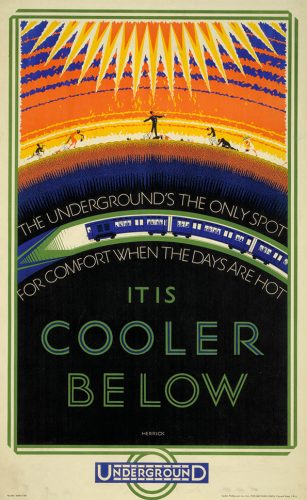
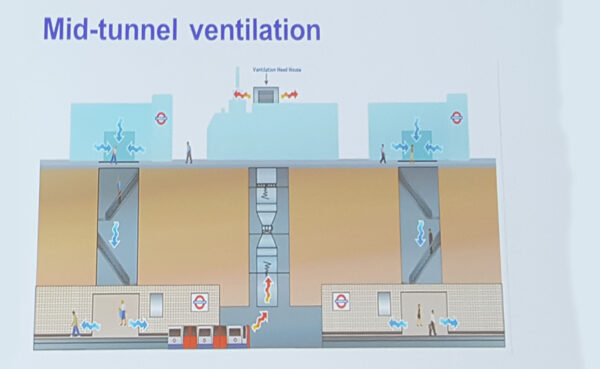
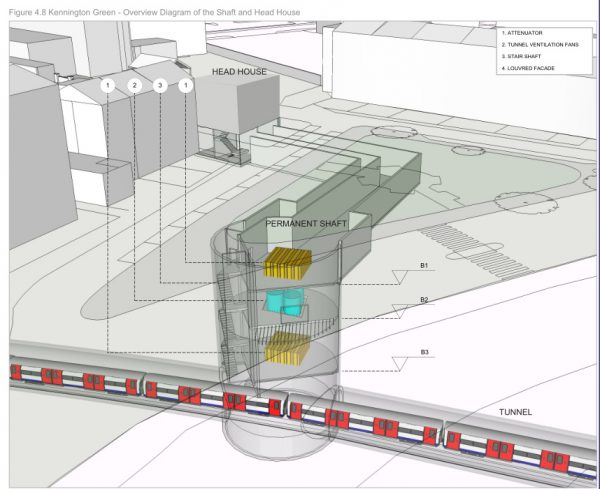
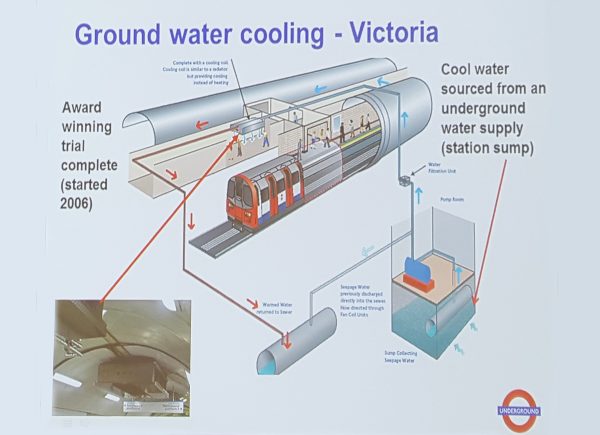
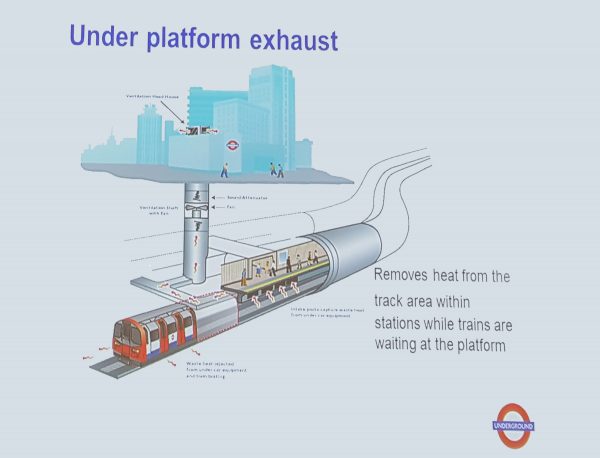
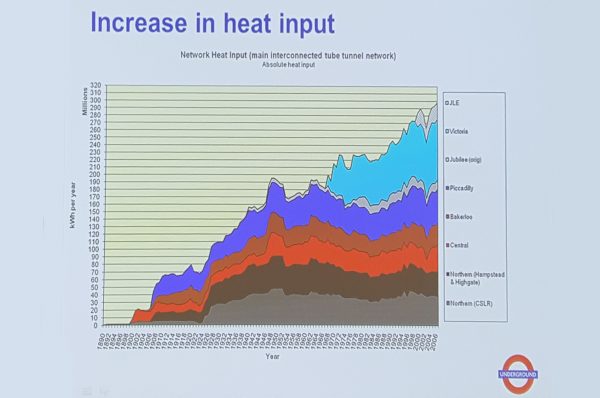
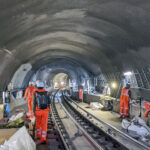 Behind the scenes at Bank tube station's huge upgrade…
Behind the scenes at Bank tube station's huge upgrade…